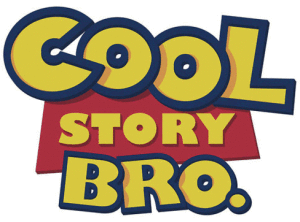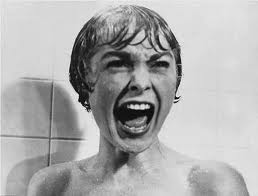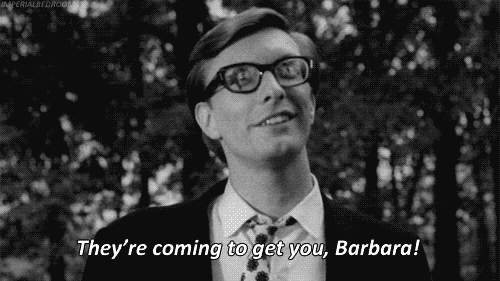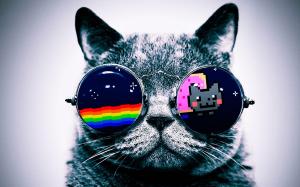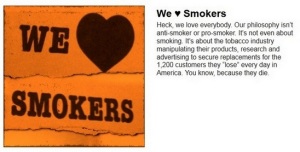Classical Rhetoric Up In Smoke: Cool Persuasion, Digital
Ethos, and Online Advocacy
Cultural Cool
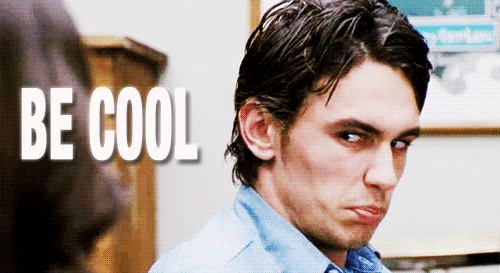
“‘Cool’ is certainly not a new concept. In fact, some scholars have argued that sensibilities resembling cool appeared in Africa as early as 3000 B.C.E. However, what cool is and how cool operates must necessarily change as each new generation becomes interested in the concept. ”
Aspects of popular culture must change over time, because cool is a constant thing that is against the norm. Things like books, movies and other forms of entertainment are always available, but that style of each and the pattern of topic goes through changes based on what is “cool”.
If you look at the three concepts that the study by Pountain and Robbins did that the author sites as “narcissism, ironic detachment, and hedonism”.I can think specifically the horror genre when I see these (because you know how much I love it and study it, it is “cool”), but it has always been a representation of the time period and these themes from the audiences who has found them to be “cool”:
1920s– Horror Films became mainstream and arrived in America. They were “cool” in that they were new and different.
1930s-40s– The monster movie arrived in America thanks to Universal Studios. The 30’s weren’t exactly a great time, and the films were a reflection of not having people as monsters, but a true fantasy gothic idea that continues into the 40s. The settings were castles far away from anything that is realistic and it was far more romantic and fantastical.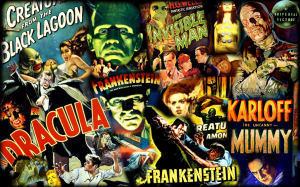
1950s– A very different time in the Red Scare. There was a lack of trust and much paranoia associated with invaders. So the Sci-Fi horror subgenre was really prominent. Films were all about foreign invaders. So this was this rebellion against the current events.


1960s-The true period of rebellion against the conservative ideals of the previous decade of the 1950s. This started the Modern Horror Film, because boundaries were tested and more was ever shown in films after this period of time. We can think Alfred Hitchcock first, because surpisingly Psycho, was the first film to show a toliet being flushed, crazy huh? Who knew the American public would think that these types of films were cool? The production company and Hitchcock’s advisors didn’t. They told him that he needed to make more films like his suspense. But he wanted the violence and the depravity that he was influenced by the book Psycho about the life of Ed Gein the famous cannibilistic serial murderer. So why was this now cool? Why did the public love this film? This was a new cool of the time in a counterculture is why. George Romero pushed this further with Night of the Living Dead that was released in 1968. It was the first major film that had an African American lead character. The film was consistently boundary pushing with its level of gore and depravity. The well-known bleak ending established how the counter-culture felt about the “authorities”. Overall pushing the limits in horror cinema became cool, and the American audiences were loving it.
1970s-The boundaries pushing was at an all time high. The Sexual Revolution was upon us, along with an ultimately interesting time in American history. Ultra-violence and nudity were prevalent in the horror film thanks to low-budget exploitation films. Why was this cool? Really it was another sense of feeling detached from society in this culture.


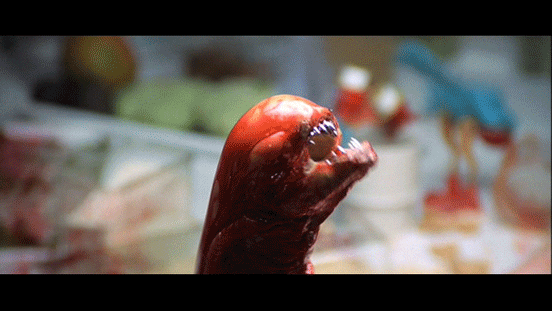 Did you all know its the 35th anniversary of Alien? How cool is that??!!
Did you all know its the 35th anniversary of Alien? How cool is that??!!
1980s– The body horror decade was certainly alot more fun than the previos ones! It was cool to have a funny horror film, or just complete excessive unbelieveableness. Why? The materialism and excess of the 1980s. Films like Evil Dead and Re-Animator were gorey in excess, but were also slightly humorous. There was a ease and difference from the previous decades.


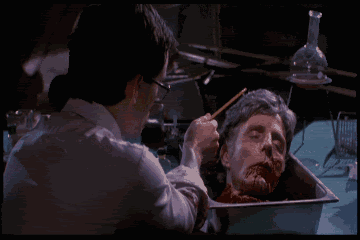
1990s-A lot more about human horror. This sub-genre is dubbed the psychological thriller and was super prevalent in the 90s. Not considered horror by some, but still very cool! There also was the true creation of the parody of films thanks to Wes Craven’s Scream. It was a real horror film, but it was aware of itself the whole time so it subsenquently made fun of the genre itself. This was now cool. Horror fans were smarter and they knew the rules.



2000s– Many of the major events of the decade influenced the topics of the films and ZOMBIES!!!! 28 Days Later was very much so influenced by the idea of a biological warfare on people being affected and becoming mindless and vicious. This was fear of course, but we thought zombies were so cool, and still do! Why? Romero really brought them to the screen in 1968, so why did they take so long to really come into the cool? Vampires had a little bit of flare too, but we can’t really call what was popular horror…it was romance. Another little subgenre came out of this decade and it was dubbed “Torture Porn”, while not quite the use of that word that we are used to, they are very adult in nature. The films like Saw and Hostel are so based on extreme torture violence and nudity that its a question of human nature. Jaded sense of what the audience finds cool in the film. Found footage technically started in 1999 with The Blair Witch Project, but heavily continued into the 2000s.The films are amateur in the camera work and they invoke the sense that we are all now connected to recording now. YouTube allowed us to all be filmmakers. So found footage is cool, because we can see those films as being realistic and we found them interesting.

2010s– Really old is cool again. Many filmmakers are remaking older movies OR they are taking the older styles and using that in their films. I think of The Conjuring when I think of the 1960s feel of the film. It was obviously set in that time, but the whole film is very suspense driven and not in your face. The future is up in the air.

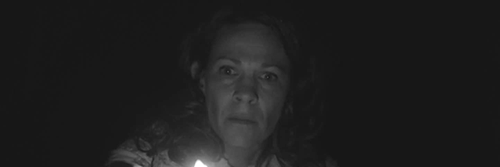
So I could VERY much so go into more detail (I know I am a super nerd about it :)) but it is relevant, I think(hope) to what cool is culturally from my perspective. It changes with the times.
Digital Cool
“If the concept of cool is always affected by cultural changes, then the dawn of the information age and the networks of computers that made it possible must also transform the concept once more. ”
Cool transforms like everything else due to technology.
How does it operate in a open space of information that is apparent in the internet?
Cool Ethos
A persuasion from “cool” is an “anti-persuasion”. Meaning that what is cool is now not neccessarily in the tradition of the persuasive rhetoric of the past. The drive for community online has allowed for spaces in which people can communicate various things those platforms of social media. The point that author makes it that no matter the point of sharing by individuals to the digital space is it still a rhetorical thing, because of the purpose and persuasion involved.
An example given is The Onion organization that are a satircal news website. They establish the rhetorical cool, because they are anti-persuasive to being real news by being funny-but they have a real purpose still. Just like a couple of my favorite shows in The Colbert Report and The Daily Show are satircal political comedy shows. They still have their views and agenda in why they are doing what are, but they are funny and manage to persuade the viewer that they don’t.
This is cool, I think as a fan, because we have so much serious news. News is biased and horrible now. We have a hard time distingushing what is real and we have a hard time avoiding hearing about horrible things on the news. So we like looking at funny satire while still getting news.
A Study in”the truth”
The author looks at the anti-smoking organization, “the truth”, because of their ethos in the way they get across their agenda.
Their purpose is convince people to stop smoking or avoid smoking. The way they do it is unconventional to previous tactics. They use the anti-persuasion that is discussed in the ethics area. They get their point across without really putting it in your face. They question the user of the cigarettes. Their method is to outcool smoking ads. And appear to not be against smoking apparently:
I really see the anti-persuasion in this. Of course they are against smoking, but they are appealing to the smokers by not hating on them like other methods do. They are reaching out to them and pointing a finger at another entity the tobacco industry!
Online Advocacy
So do organizations benefit from advocating online?
Yay! I can be involved from the comfort on my own home, but do I do more than that? I think that is the major issue provided by the author. Does online involvement hamper on in-person involvement? Do people feel they have done enough by making a post? By sharing the organization on Facebook? I think this is a really good point. And something to consider.

